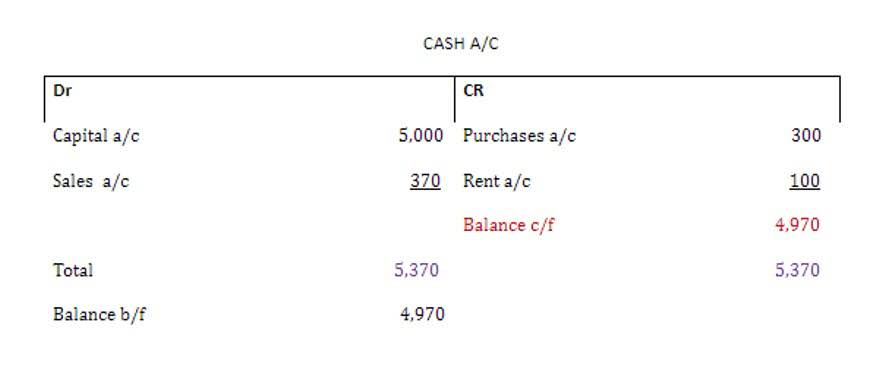What is certified payroll? How to report and file
4 février 2022
Conversely, companies with lower credit ratings are perceived as riskier and may face significantly higher borrowing costs. This means that the company pays more on its debt than it earns on its equity. In this case, using debt financing decreases the financial leverage and the ROE of the company. For example, if a company has a cost of debt of 12% and a ROE of 8%, then it can increase its ROE by reducing its debt and relying more on equity financing. This is the unfavorable scenario for using debt financing, as the company suffers from the tax disadvantage and the lower return on equity. This means that the company can earn more on its equity than it pays on its debt.
Cost of Debt: How to Calculate and Use It in Your Capital Structure

Refinancing or consolidating your debt doesn’t automatically diminish the debt itself. It’s only a reorganization of your existing debts with more favorable terms. Therefore, it’s imperative to remain disciplined with your repayment plans and avoid cost of debt falling back into high-cost debt in the future. Before deciding to refinance, it’s crucial to meticulously analyze and understand the terms of both your current loan and the proposed loan. Some refinancing plans might seem beneficial initially but can ultimately result in greater costs due to hidden fees, penalties or varying interest rates.
- If the tax benefits from the interest expense deductions outweigh the costs of debt financing, a company may be more likely to choose debt over equity financing.
- Some analysts believe that the company may increase its dividends by up to 5% each year.
- As you have seen, the cost of debt metric represents how much you pay in interest expenses in relation to the total amount of debt.
- With equity financing, an investor loans money to a business in exchange for small company owners.
What factors affect the calculation of total cost of debt?
The market value of debt is the amount that the company owes to its creditors, which can be obtained from the balance sheet or the notes to the financial statements. The market value of equity is the total value of the company’s shares, which can be calculated by multiplying the number of shares outstanding by the current share price. For example, if a company has 100 million shares outstanding and its share price is $50, the market value of equity is $5 billion. It changes over time depending on the market conditions, the credit rating of the company, the interest rate environment, and the tax policy.
- The cost of debt for the 10-year bond is higher than the cost of debt for the 5-year bond because of the longer term and the higher coupon rate.
- The cost of debt analysis is a useful tool for measuring the financial leverage of a company and its impact on the profitability and risk.
- Treasury bond and another debt security of the same maturity but different credit quality.
- The primary advantage is that you only have to worry about a single monthly payment and interest rate, instead of many.
- However, higher financial leverage also means higher financial risk, as the company has to pay more interest and has less flexibility to cope with unexpected events.
Why Is Cost of Capital Important?

As an example, suppose a company’s cost of debt is equal to 6% and its corporation tax rate is 20%. And it represents the amount of money a business would have to pay its debt holder for every $1 of debt financing it obtains from them. With that said, the cost of debt must reflect the “current” cost of borrowing, which is a function of the company’s credit profile right now (e.g. credit ratios, scores from credit agencies).

Generally, the higher the credit risk of the company, the higher the cost of debt. The longer the maturity and the more complex the features of the debt instruments, the higher the cost of debt. The Catch Up Bookkeeping higher the risk-free rate and the market interest rates, the higher the cost of debt. The lower the tax rate, the higher the cost of debt, since the interest expense is tax-deductible and reduces the taxable income of the company. Finally, the company should use debt wisely and not overborrow or underborrow. Overborrowing can increase the cost of debt, as the company may face higher interest rates, lower credit ratings, and higher default risk.
An increase or decrease in the federal funds rate affects a company’s WACC because it changes the cost of debt or borrowing money. The firm’s overall cost of capital is based on the weighted average of these costs. Naturally, rising interest rates will make borrowing more expensive across the board. Over the past year-plus, the Federal Reserve has raised the overnight federal funds rate at its fastest pace in history, leading to substantially higher borrowing costs for almost all forms of debt. In other words, loan origination (and the forthcoming interest expense) just got much more expensive, especially because interest compounds exponentially. Determine the cost of equity, which represents the rate of return expected by equity investors.

Step-by-Step Example of Calculating Cost of Debt
This gives investors an idea of the company’s risk level compared to others, as riskier companies generally have a higher cost of debt. The cost of debt is the total interest expense paid for borrowing money. It is the effective interest rate that a company owes on any liabilities such as loans. Ultimately, the key to using a cost bookkeeping of debt calculator effectively is to approach it as one part of a larger financial management strategy. The second step is to get the total interest cost of the loan, which you’ll plug in for “interest expense” in the formula.
Cost of Debt Explained
- The cost of debt measures the effective interest rate a company pays on its borrowing, adjusted for the tax benefits of deductible interest expenses.
- The cost of debt can be expressed as a nominal rate or an after-tax rate, depending on whether the interest payments are tax-deductible or not.
- This adjusted cost provides a more accurate basis for comparing the benefits of debt versus equity financing, as it reflects the tax advantages of debt.
- Therefore, depending on the availability and reliability of data, a company may use different methods to estimate its cost of debt.
- As we can see, utilities and telecom services have high debt levels and low costs of debt, because they have stable and predictable cash flows, and can benefit from the tax shield of debt.
- For the default spread, one can look at the additional yield over the risk-free rate that bonds with a similar credit rating are commanding in the market.
Therefore, it is important to choose the appropriate method and be consistent in applying it. The cost of debt is a key input for financial leverage analysis, as it affects the profitability, risk, and value of a leveraged firm. Though related, there are key differences between these two concepts. The cost of debt is the effective interest rate a company pays on its debts, such as bonds and loans. This method is particularly relevant for companies with publicly traded debt.
